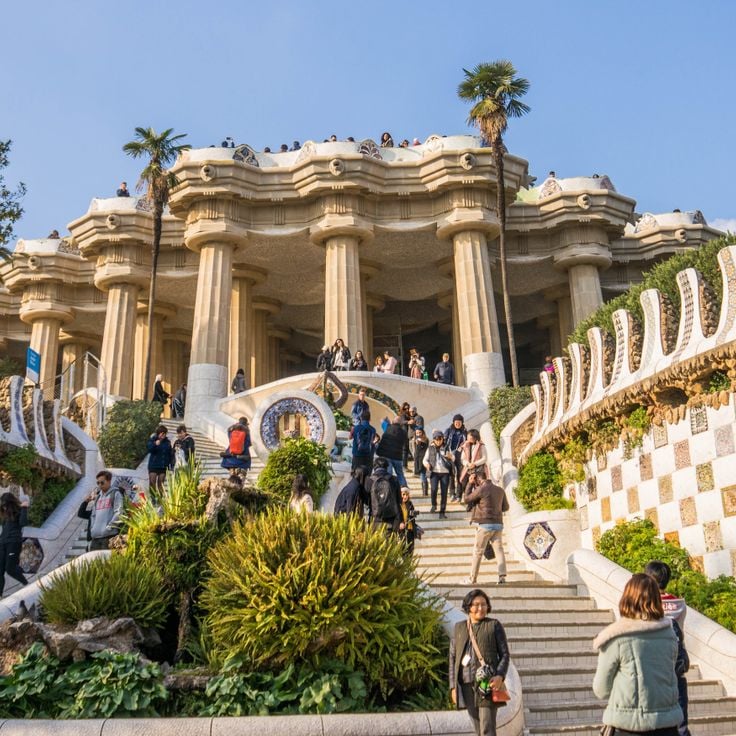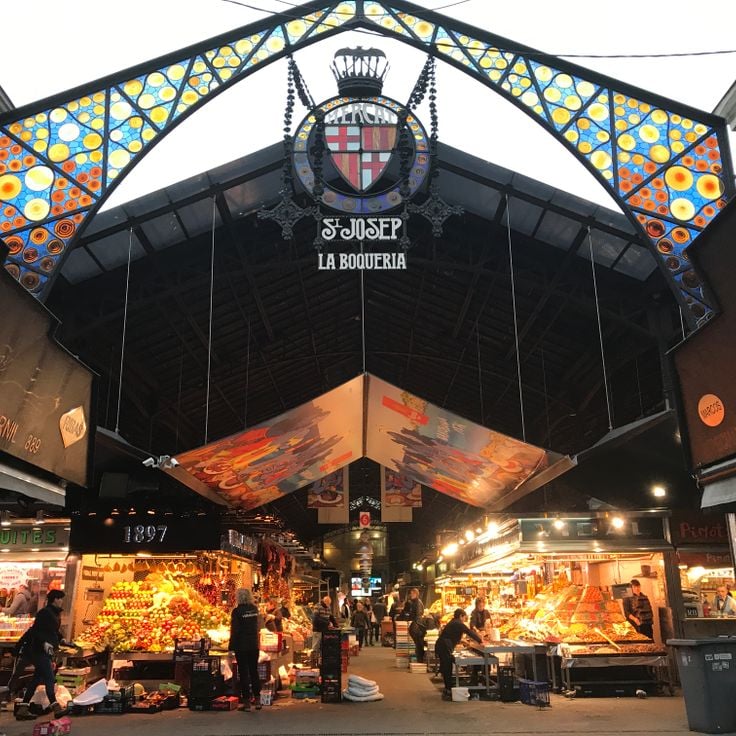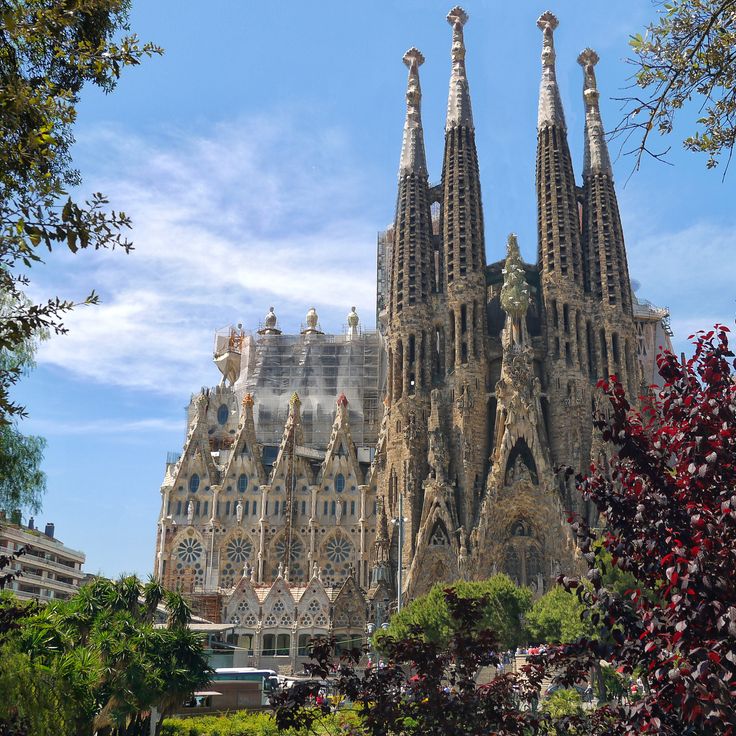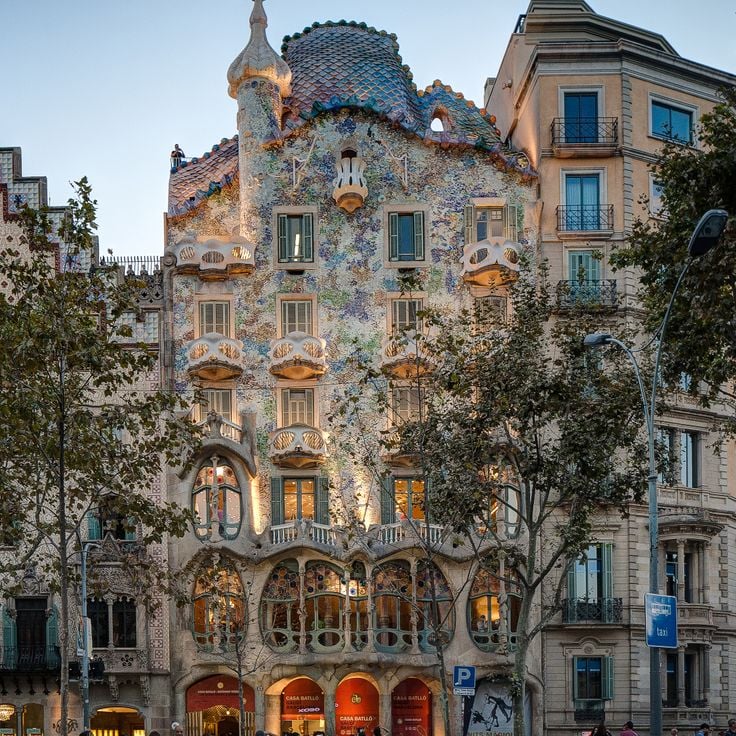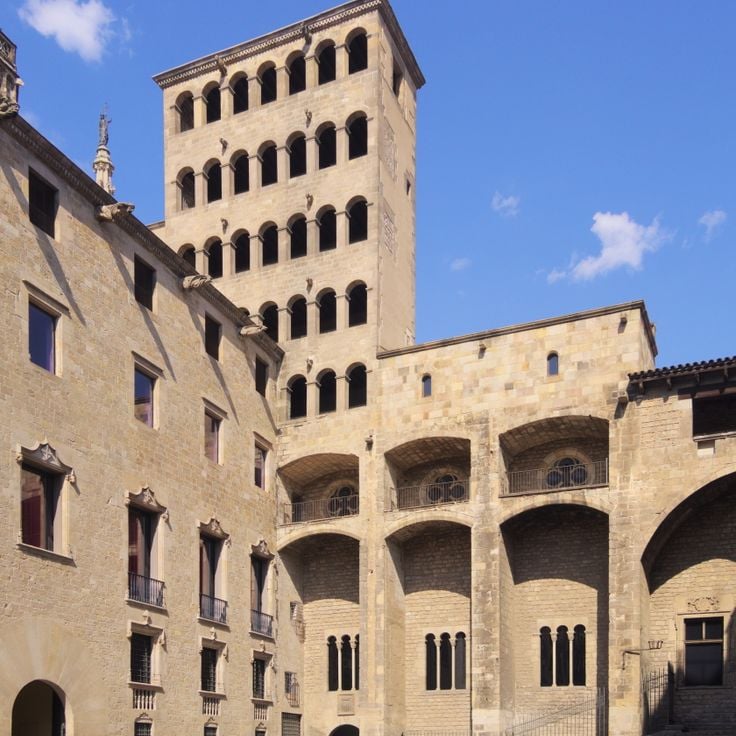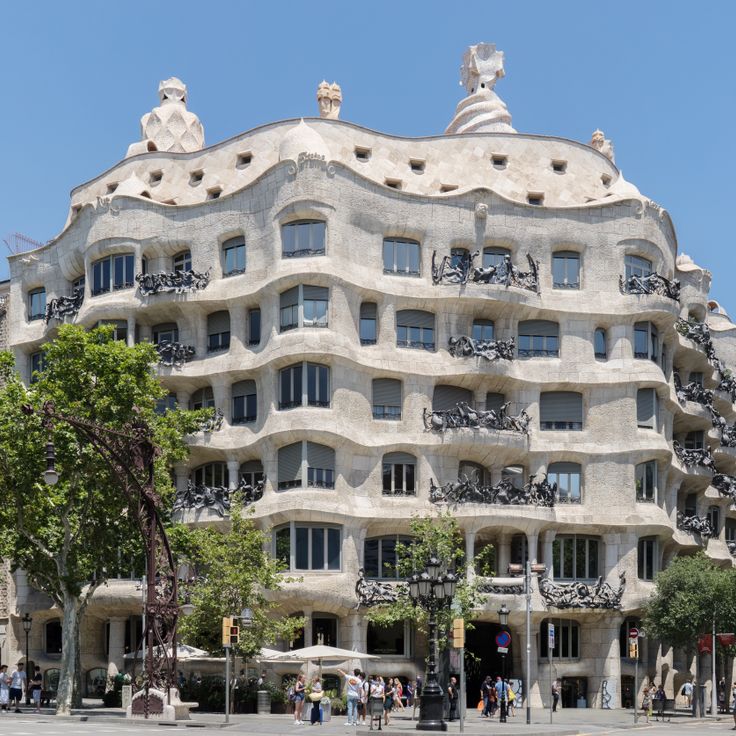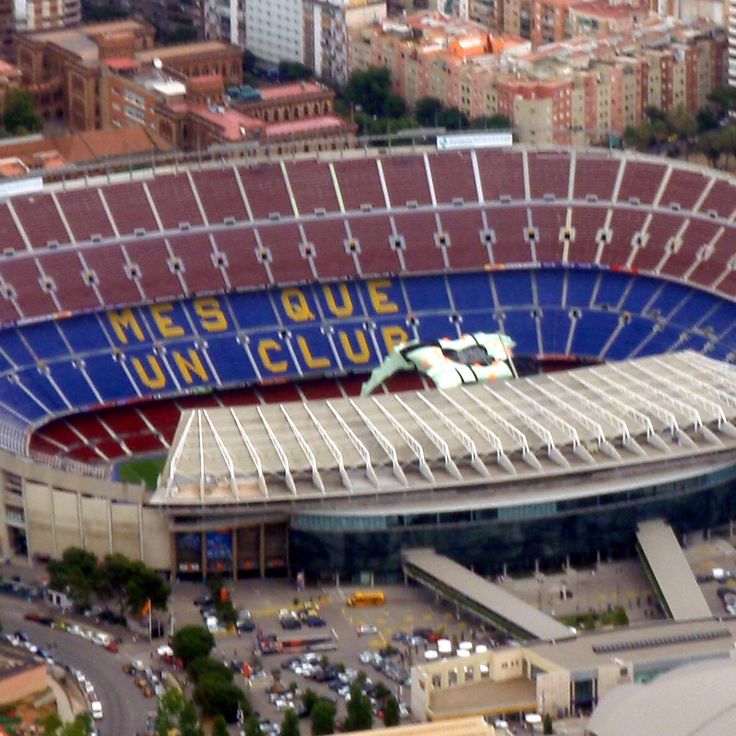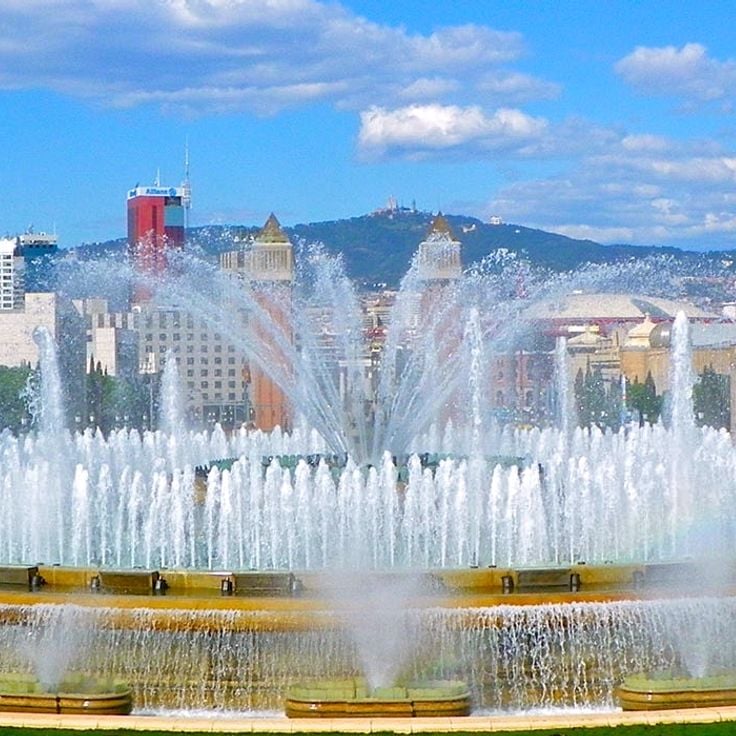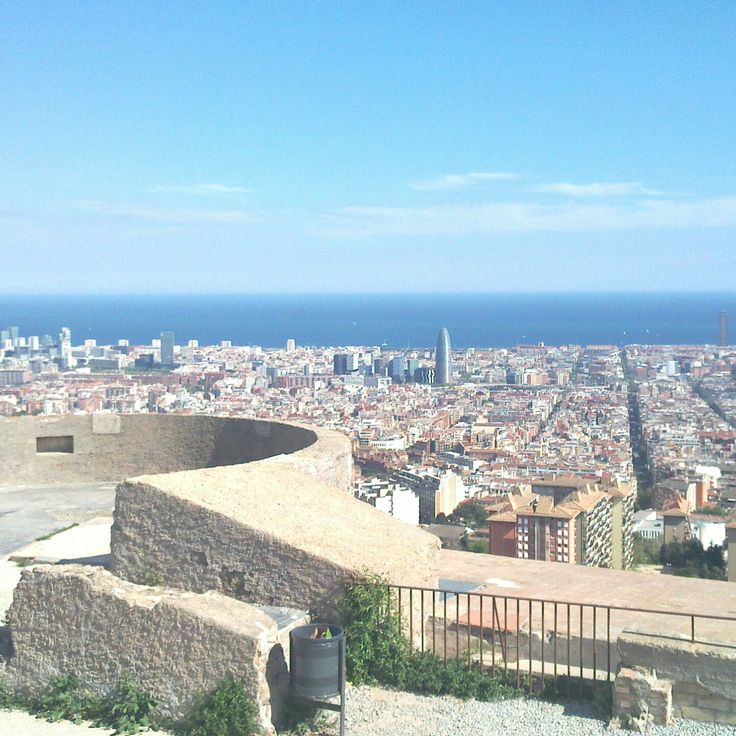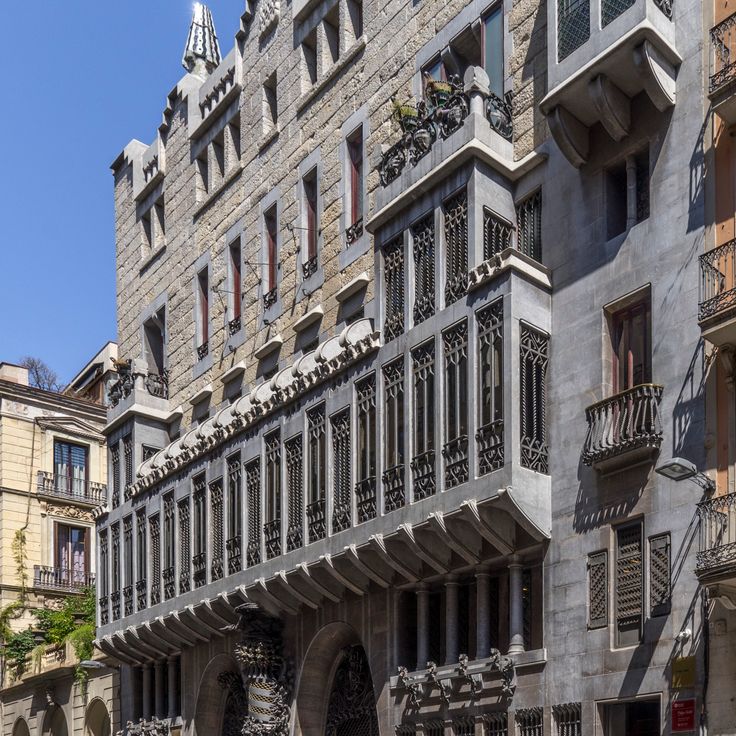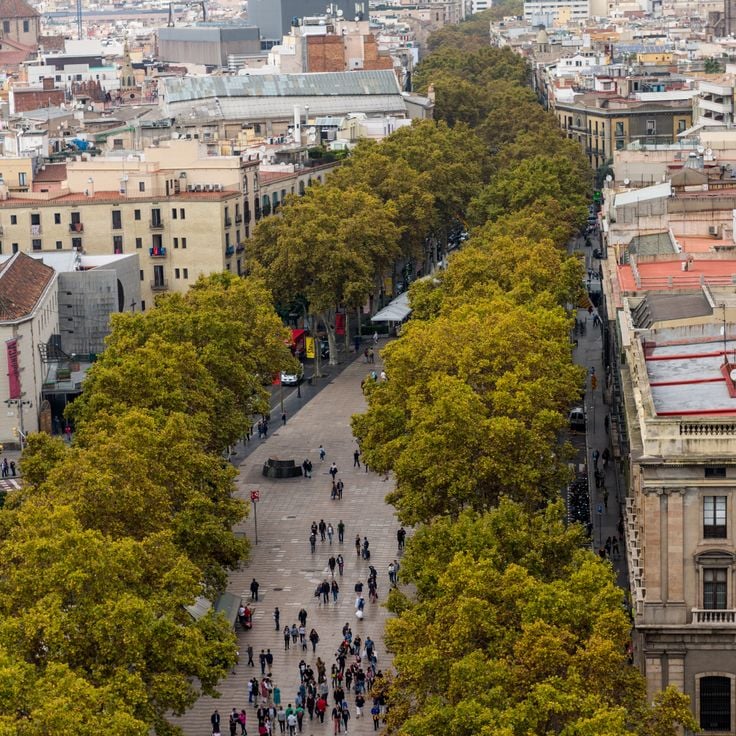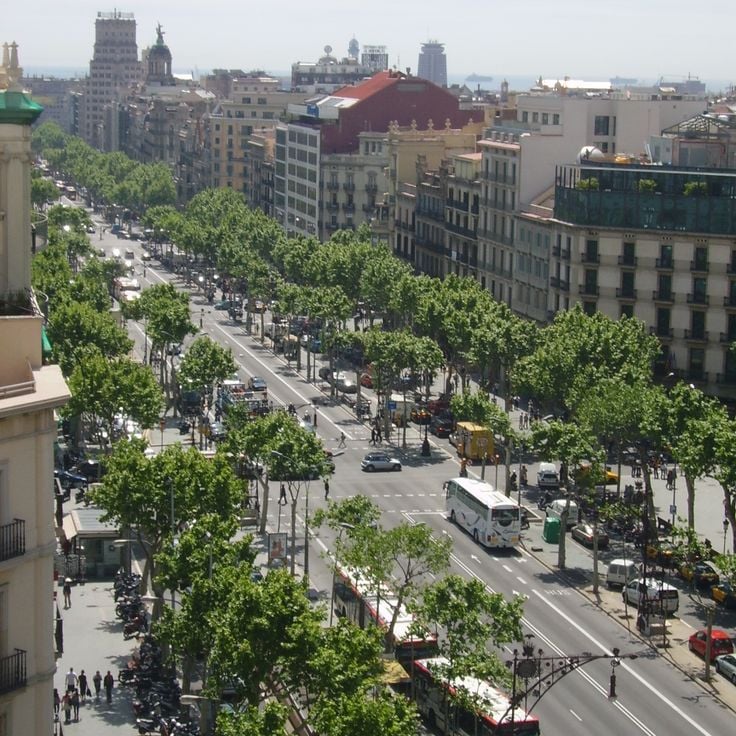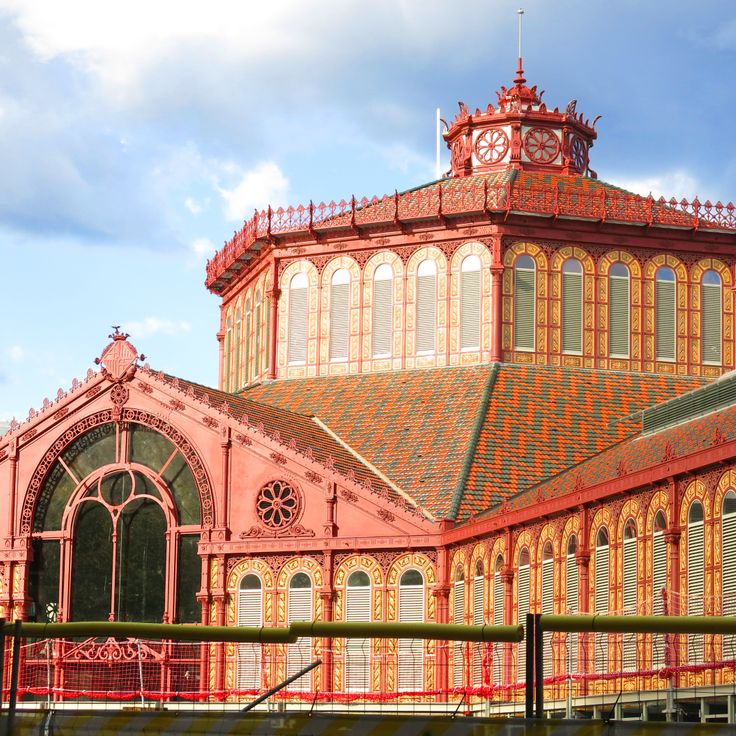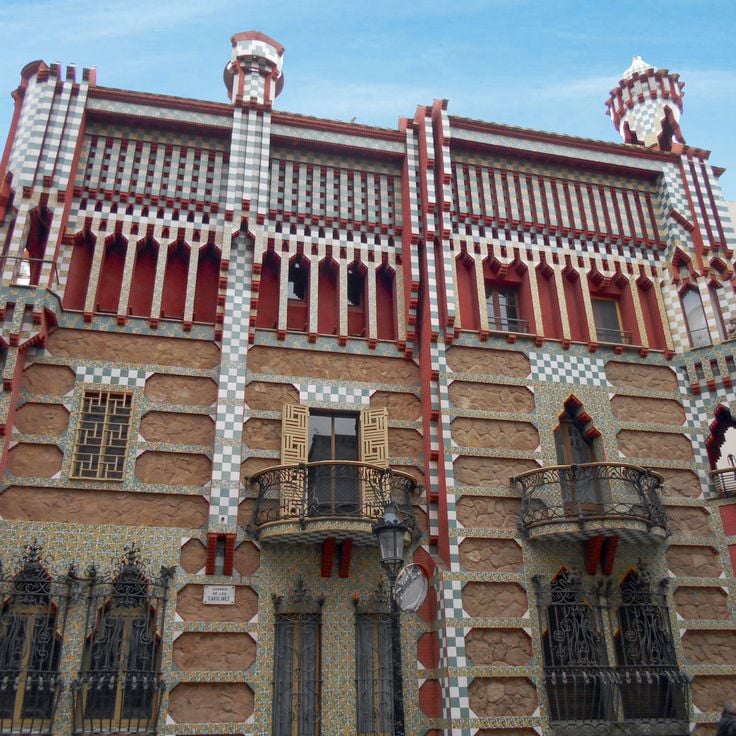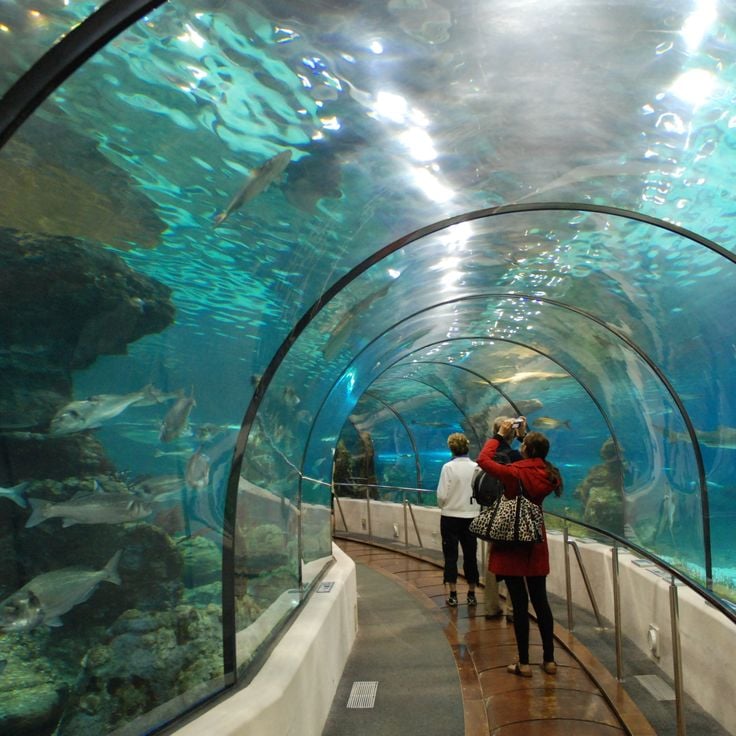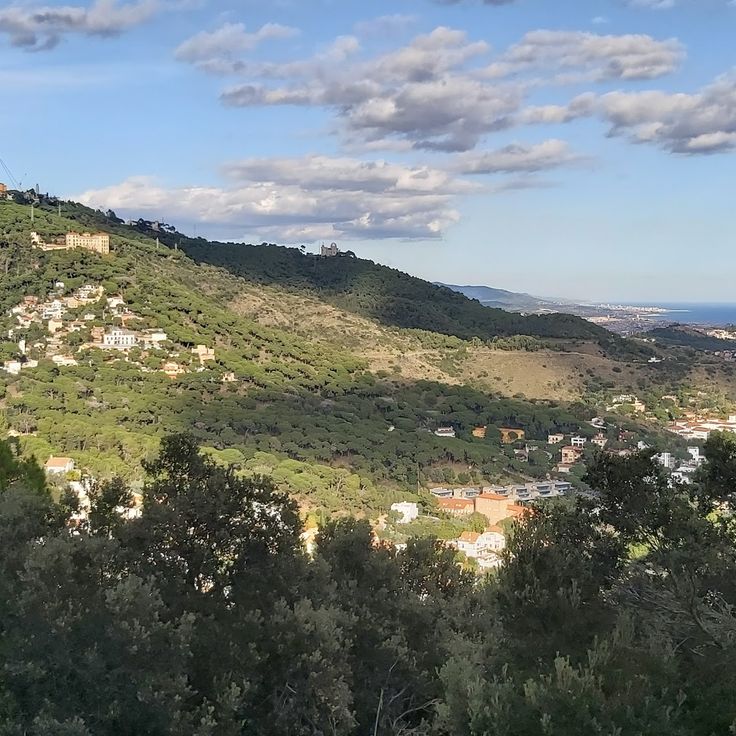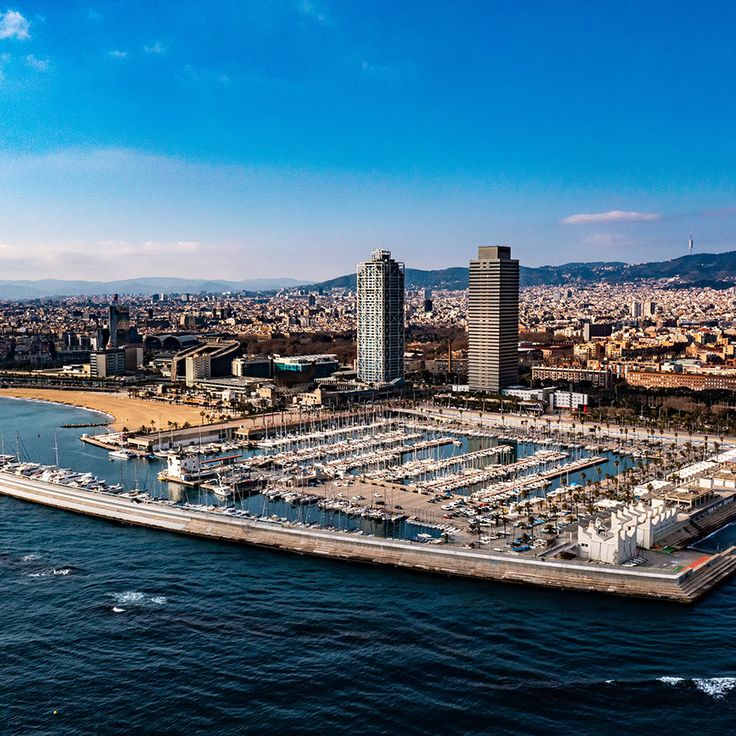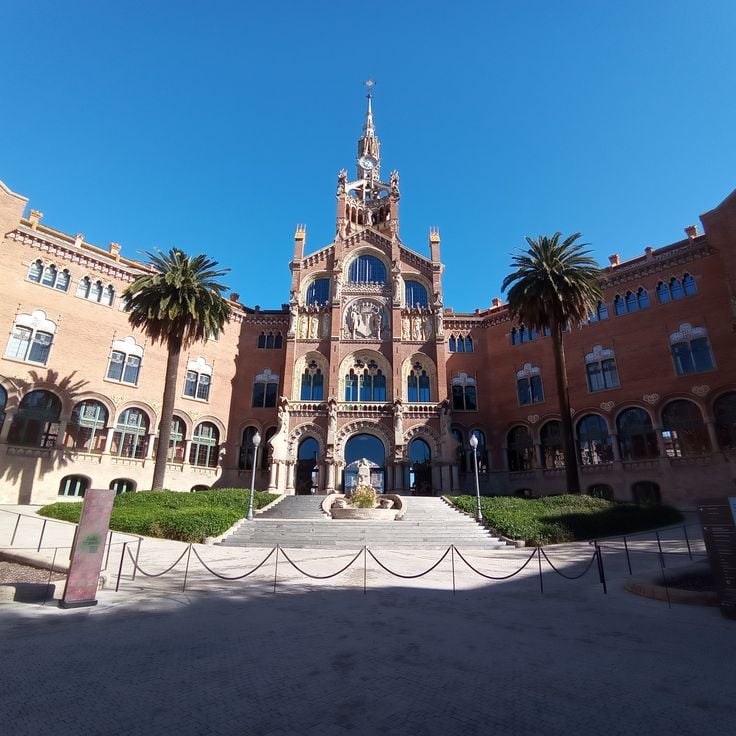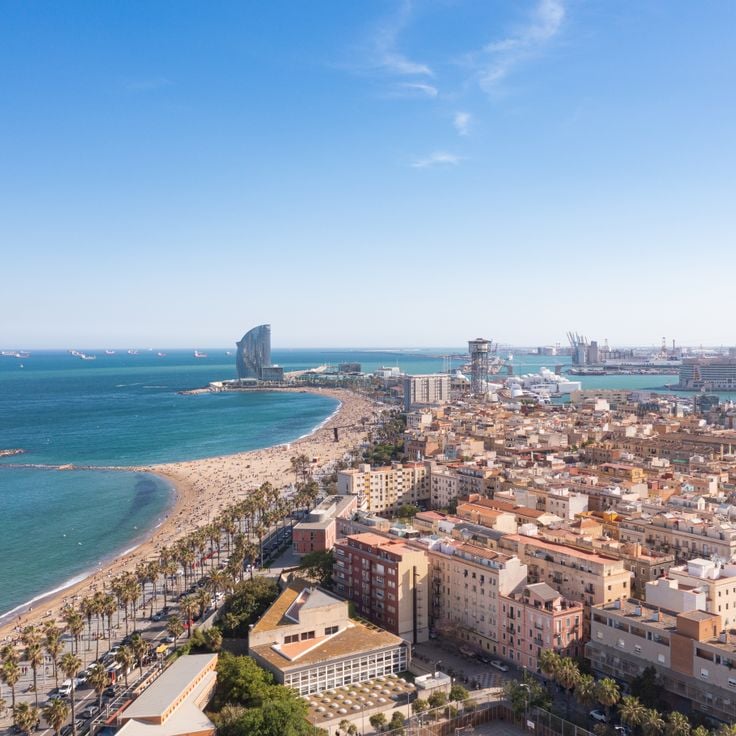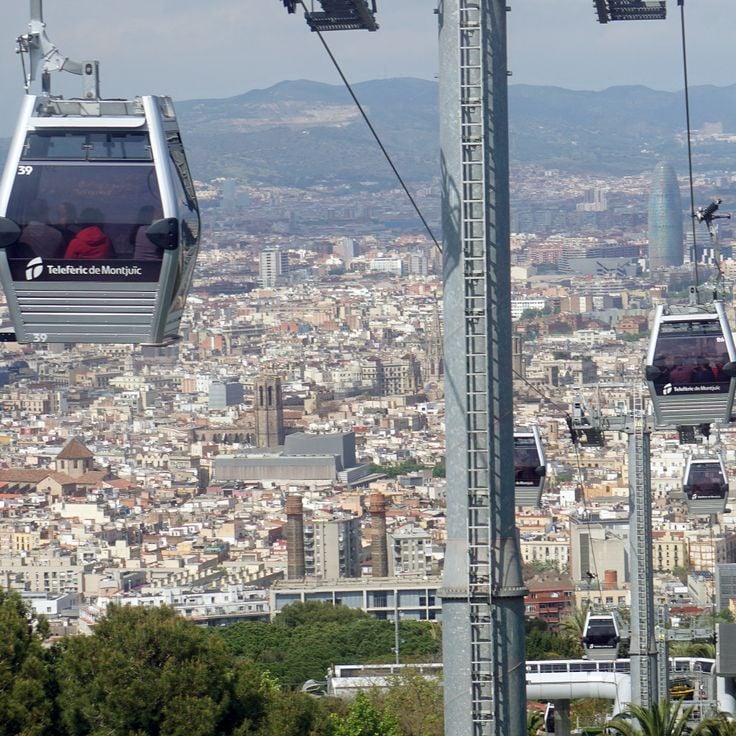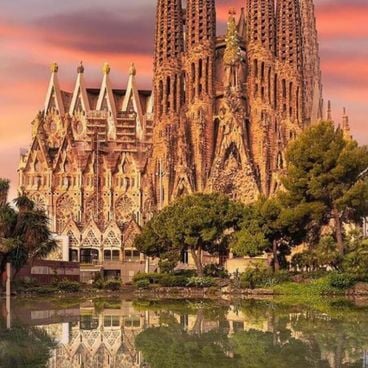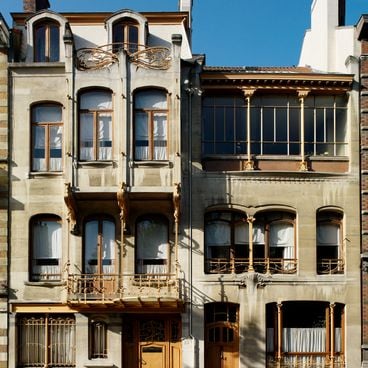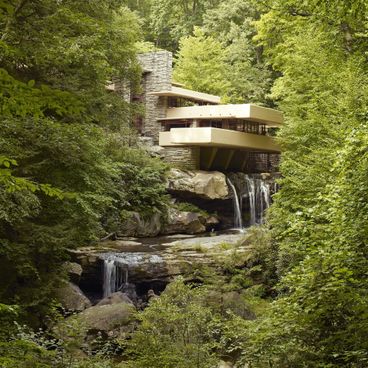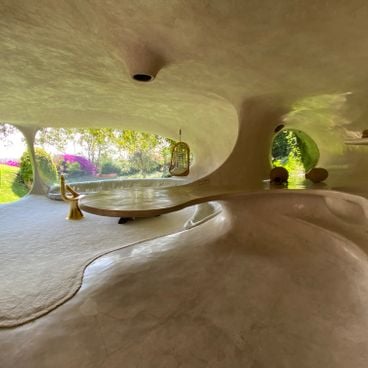Barcelona offers a wide range of architectural and cultural sites that reflect centuries of Catalan history. The city combines Gothic churches and medieval streets with the organic forms of Antoni Gaudí's modernist buildings. From the Sagrada Família to Parc Güell, his designs shape the cityscape, while the Gothic Quarter and palaces such as Palau Güell represent earlier periods. Museums including the Picasso Museum and Joan Miró Foundation illustrate the city's artistic legacy. Markets like La Boqueria and Sant Antoni provide insight into Catalan daily life. The waterfront district of La Barceloneta, the Olympic Port, and Montjuïc with its cable car and fountain broaden the range. Other destinations include Casa Batlló, Casa Milà, the Hospital de Sant Pau, the National Art Museum of Catalonia, and the Aquarium.
This public park in the Gràcia district represents one of Antoni Gaudí's major works in Barcelona. Conceived between 1900 and 1914 as a garden city project, Parc Güell displays the Catalan architect's signature style through curved structures, colorful ceramic mosaics, and organic building forms. The benches decorated with trencadís technique on the main terrace offer wide views over the city. Stone colonnades and the two gatehouses at the entrance demonstrate Gaudí's integration of nature and architecture. The park covers 43 acres (17 hectares) on the slopes of Carmel Hill and was declared a UNESCO World Heritage Site in 1984.
This covered market was founded in 1840 and now ranks among Barcelona's essential sites. La Boqueria features more than 200 stands offering vegetables, fruits, meats, fish, and Catalan regional products. The market sits directly on La Rambla, connecting the city's culinary tradition with the architectural diversity of the historic center. Vendors here sell fresh goods daily to locals and visitors. The market hall itself displays 19th-century ironwork construction.
This concert hall was built in the early 20th century to the designs of architect Lluís Domènech i Montaner and showcases Barcelona's modernist architecture at its finest. The Palau de la Música Catalana combines sculptural facades with colorful mosaics, stained glass windows and elaborate interior decoration. The main auditorium is crowned by an inverted glass skylight that brings natural light into the space. The institution hosts performances ranging from classical music to contemporary presentations and stands as a major representative of Catalan Modernisme alongside the works of Gaudí.
This Catholic basilica was designed by Antoni Gaudí in 1882, combining Gothic and Art Nouveau elements. The Sagrada Família features 18 towers, the tallest reaching 328 feet (100 meters). The structure stands as one of Gaudí's defining works in Barcelona and has drawn international attention for decades. The architecture demonstrates a synthesis of religious symbolism and organic forms characteristic of Gaudí's approach. Construction continues to this day, following the original plans and methods outlined by the architect.
This residential building was transformed by Antoni Gaudí in 1904 and stands as one of the most representative examples of modernist architecture in Barcelona. The facade displays undulating forms, colorful mosaics, and ceramic tiles, while the roof features scale-like elements. Inside, Gaudí developed an organic spatial concept with curved walls, handcrafted doorknobs, and a light well that channels natural daylight into all floors. Casa Batlló occupies a prominent position on Passeig de Gràcia and forms part of the UNESCO World Heritage designation for Gaudí's work.
This historic quarter forms the medieval core of Barcelona and includes narrow lanes, public squares, and the Cathedral of Saint Eulalia. The streets follow the Roman city plan, with sections of ancient fortifications still visible along several routes. This district preserves architectural styles from the 1st to the 15th centuries and served as the administrative and religious center of the Catalan capital during the Middle Ages. Visitors encounter remnants of Roman walls, Gothic palaces, and narrow passageways typical of medieval Mediterranean cities.
This residential building in the Eixample district, designed by Antoni Gaudí between 1906 and 1912, represents one of the most significant examples of modernist architecture in Barcelona. Casa Milà features an undulating stone facade that recalls natural geological formations, along with sculptural chimneys on the rooftop. Also known as La Pedrera, the building has been a UNESCO World Heritage Site since 1984. The structure employs no load-bearing interior walls, allowing for flexible floor plans throughout the apartments.
Spotify Camp Nou has stood in Barcelona since 1957 as the home stadium of FC Barcelona. With a capacity of 99,354 seats, this stadium ranks as the largest in Europe. The venue has undergone several expansions and includes a museum documenting the club's history. Guided tours provide visitors access to the changing rooms, player tunnel, and pitch. The stadium sits west of the city center and is accessible by public transportation.
This fountain was built for the 1929 International Exposition in front of the Palau Nacional and combines water jets with light projections and music. The installation sits at the base of Montjuïc hill and draws visitors with evening performances where fountains are choreographed to the rhythm of various musical pieces. The technical setup uses multiple water pumps and more than 3,000 light sources to create shifting color effects. As part of the urban heritage from the 1929 Exposition, this fountain represents Barcelona's modernization efforts in the early 20th century and remains a testament to the engineering work of that period.
This church was built during the 14th century and represents Catalan Gothic architecture through its simple, harmonious spatial design. The three-nave interior is supported by slender octagonal columns that rise to a central nave approximately 108 feet high (33 meters). Two octagonal towers reach 177 feet (54 meters) and flank the main facade. Construction took place between 1329 and 1383 under the direction of Berenguer de Montagut, and the church stands as an outstanding example of medieval Barcelona's architectural achievements.
This foundation presents over 10,000 works by Catalan artist Joan Miró in a modern white building on Montjuïc that opened in 1975. The collection includes paintings, sculptures, tapestries, and ceramics from all periods of Miró's career. Designed by architect Josep Lluís Sert, the museum features bright exhibition rooms with natural light. This center also hosts temporary exhibitions of contemporary art and maintains a research library. An outdoor sculpture garden complements the permanent collection.
This former military installation was built for anti-aircraft defense during the civil war at an elevation of 860 feet (262 meters) and now provides a full panorama of Barcelona. The Bunkers del Carmel have become a popular vantage point for visitors seeking a complete view of the Catalan capital. From this position on Turó de la Rovira, the Sagrada Família, the Mediterranean coastline and the surrounding mountains are visible. The site documents a chapter of the city's wartime history while serving today as a public viewing area.
This museum houses one of the most extensive collections of Picasso's work, with 4,251 pieces in its permanent exhibition documenting his early years in Barcelona and later creative periods. The museum occupies five interconnected medieval palaces dating from the 15th century in the El Born neighborhood, demonstrating the Spanish painter's close connection to the Catalan capital. The collection includes paintings, drawings, ceramics, and prints from various periods of his artistic development.
This residential palace, designed by Antoni Gaudí between 1886 and 1888 for industrialist Eusebi Güell, represents one of the architect's early masterworks in Barcelona. The ashlar stone facade displays Moorish influences through two parabolic entrance arches, while the interior centers on a domed hall with star-shaped perforations that filter natural light. Twenty chimneys on the rooftop terrace feature ceramic fragments and glass mosaics in varied colors. Gaudí developed design principles here that he would refine in later projects including the Sagrada Família. The building in the Raval district served as the Güell family residence until 1945 and has been a UNESCO World Heritage site since 1984.
This central promenade connects the port to Plaça de Catalunya over a distance of 0.8 miles (1.3 kilometers) and ranks among Barcelona's most visited streets. La Rambla runs through the historic center and provides access to various neighborhoods of the city. The tree-lined avenue is flanked by numerous cafés, shops, and newsstands. Street performers and flower stalls characterize the streetscape along the entire route. The promenade has served for centuries as an important thoroughfare and social gathering place, displaying various architectural styles from different periods. The upper end meets Plaça de Catalunya, while the lower end terminates at the Christopher Columbus Monument.
This park occupies 17 hectares (42 acres) in the El Born district on the site of a former military fortress. The grounds include a lake, the Catalan parliament building, the municipal zoo, and the geology museum housed in the historic arsenal structure. Developed in the late 1800s for the Universal Exposition, the park now combines public green space with administrative and cultural facilities. The design incorporates French landscape elements and integrates water features, fountains, and sculptures by various Catalan artists.
This neighborhood extends northeast of the city center and retains its earlier character as an independent municipality that joined Barcelona in 1897. Narrow streets connect small squares lined with cafés and restaurants, while local markets and independent shops define daily life. Traffic-calmed roads allow visitors to explore late 19th and early 20th century architecture, including several early works by Gaudí such as Casa Vicens. The district attracts residents and travelers seeking everyday urban life away from Barcelona's main tourist circuits.
This museum holds one of the world's most important collections of Romanesque art, along with substantial holdings of Gothic painting and sculpture from Catalonia. The exhibition rooms also present works from the Renaissance, Baroque and modern periods, including pieces by Catalan artists of the 19th and 20th centuries. The building was constructed for the 1929 International Exposition and stands on Montjuïc hill overlooking Barcelona. The institution documents a thousand years of artistic production in the region, complementing the cultural heritage that visitors explore throughout the city.
This market built in 1882 displays an octagonal structure of forged iron that reopened in 2018 after extensive renovation. Sant Antoni Market sells fresh food products, local specialties and regional goods across one of Barcelona's largest covered market halls. The architecture combines nineteenth-century ironwork with modern elements, creating a functional space for daily shopping. Located in the Eixample district, the market has served as an important supply point for the neighborhood for over 140 years.
This residence in Barcelona was Antoni Gaudí's first private commission, completed between 1883 and 1885. The facade displays Moorish and oriental influences with elaborate ceramic decorations in green, yellow and red tones. Gaudí developed here the organic forms and colorful surfaces that would later characterize his more famous works. The building stands in the Gràcia neighborhood and adds to the city's architectural route an early example of Gaudí's output, before he achieved international recognition with projects such as the Sagrada Família.
This aquarium in the old city houses 11,000 marine animals from 450 species across 35 tanks. The 260-foot (80-meter) underwater tunnel passes through the Mediterranean tank, allowing visitors to observe sharks, rays and other Mediterranean species at close range. The facility complements Barcelona's maritime identity through its location at the old port and provides insights into Mediterranean and tropical marine ecosystems. Thematic areas present different habitats, from coral reefs to the depths of the Mediterranean Sea. The aquarium stands among the city's major educational institutions and draws more than a million visitors annually.
This mountain rises 1,680 feet (512 meters) above Barcelona and marks the highest point of the Serra de Collserola. The site contains an amusement park that ranks among the oldest in Europe, alongside the Sagrat Cor basilica conceived in the late 19th century. From here, the city, the Mediterranean Sea, and on clear days the Pyrenees spread out below. The Tramvia Blau funicular railway and cable car connect the summit to the city center. This location stands among the major viewpoints of the Catalan capital.
This science museum spans 320,000 square feet (30,000 square meters) and presents the natural sciences through interactive exhibitions. CosmoCaixa covers thematic areas including matter, life, and geology, along with demonstrations of physical phenomena. The museum serves visitors of all ages with hands-on experiments that illustrate scientific concepts. The facility includes a recreated rainforest and spaces for temporary exhibitions, promoting understanding of the natural sciences and reinforcing Barcelona's status as a city with substantial cultural offerings.
This marina opened in 1991 as part of Barcelona's Olympic infrastructure and sits along the Mediterranean coast in the Sant Martí district. Port Olímpic holds 740 boat berths and serves as a modern waterfront development. The promenade features numerous restaurants and bars stretching between the harbor and adjacent beaches. The area connects the city's maritime facilities with dining and recreational spaces, demonstrating the urban transformation that followed the Olympic Games in the Catalan capital.
This modernist hospital complex was designed by Lluís Domènech i Montaner between 1902 and 1930 and ranks among the notable architectural sites in Barcelona. The Hospital de Sant Pau consists of a series of pavilions built in the Catalan Art Nouveau style, connected by underground galleries that span nine city blocks. The complex features decorative mosaics, sculptures, and ornamental details that reflect Domènech i Montaner's vision of healing architecture. The former hospital now operates as a museum and cultural center.
This 197-foot (60-meter) monument honors Christopher Columbus's return from his first voyage to the Americas in 1493. The iron column was erected in 1888 for the Universal Exposition and marks the lower end of La Rambla at the old harbor. An interior elevator carries visitors to the observation deck beneath the statue, offering views across the port, the old city and the Mediterranean. The monument rises from a polygonal base decorated with reliefs and sculptures depicting events from the age of exploration. The bronze statue shows Columbus with an outstretched arm, though the direction of his gesture remains a subject of local debate.
This former fishing district dates from the 18th century and features a 1.2-mile (1.9-kilometer) sandy beach along the Mediterranean. The streets of La Barceloneta hold numerous restaurants specializing in seafood. The district ranks among Barcelona's historic waterfront areas and complements the architectural heritage of the Catalan capital through its characteristic layout and its role as a traditional harbor neighborhood.
This cable car connects the intermediate station to Castell de Montjuïc over a distance of approximately 2,460 feet (750 meters). The cabins travel above Barcelona's commercial port and historical center, providing riders with an elevated view of the Catalan capital. The system opened in 1970 and transports visitors to the 17th-century fortress at the summit of Montjuïc. The ride takes several minutes and provides access to one of the city's notable viewpoints, from which travelers can observe the architecture of Gaudí, the medieval quarters, and the waterfront that characterize Barcelona's collection of monuments and cultural sites.
This avenue crosses Barcelona for 7 miles (11 kilometers) from northeast to southwest, connecting different neighborhoods of the Catalan capital. The street runs through business districts and residential areas, passing shopping centers, restaurants, office buildings and hotels. Along Avenida Diagonal are several landmarks, including Gaudí's Casa Milà, modern skyscrapers such as Torre Glòries and the El Corte Inglés department store. The wide thoroughfare was laid out in the 19th century as part of the Eixample plan and today shapes Barcelona's urban fabric.
